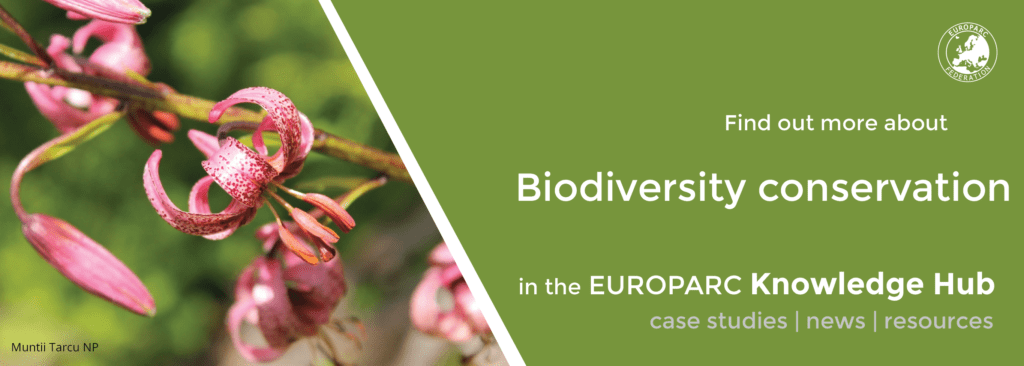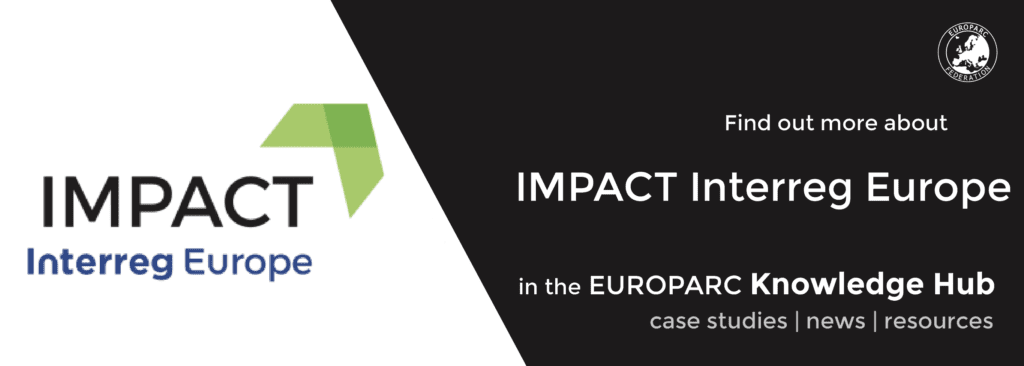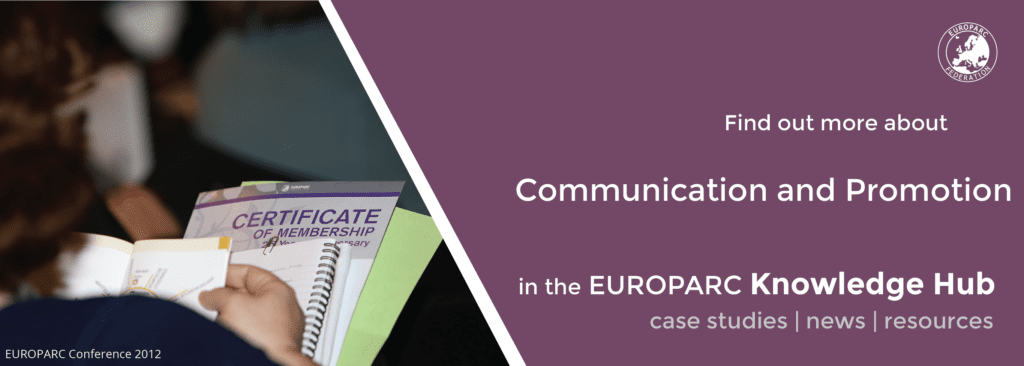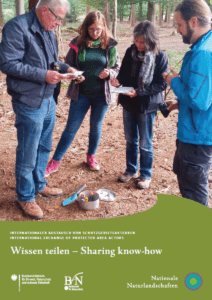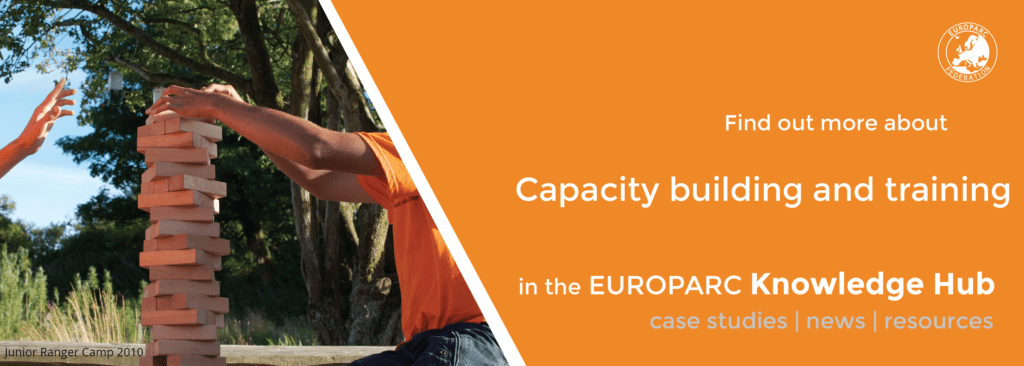What do you know about “Biological Field Stations”? – The OBFS Conference for the 1st time in Europe
CMK. Center For Environmental Sciences - Photo: Hasselt University
Get to know about the Organisation of Biological Field Stations (OBFS) a non-profit international network with more than 50 years of experience supporting their members maximizing diversity, inclusiveness, sustainability, and transparency, in a special conference host by EUROPARC member Hoge Kempen National Park in Belgium.
For the first time in Europe…
From the 9th to the 13th of September, the Hoge Kempen National Park (Belgium) will host the yearly conference of the Organisation of Biological Field Stations (OBFS), organised by the Field Research Centre Hasselt University. OBFS has the mission to help member stations increase their effectiveness in supporting critical research, education, and outreach programs and their annual Conference is a gathering of field stations managers and researchers,
- What? Yearly Conference of the Organisation of Biological Field Stations (OBFS)
- When? 9-13 September 2019
- Host: Field Research Centre Hasselt University
- Where? Maasmechelen, Zetellaan 52 (and Home Fabiola Maasmechelen)! Group accommodation in a Field Station setting.
- Who? Field station directors and managers (and researchers)
- Expected number of participants: 130 pp (70% USA; 30% Europe, South-America, and Africa)
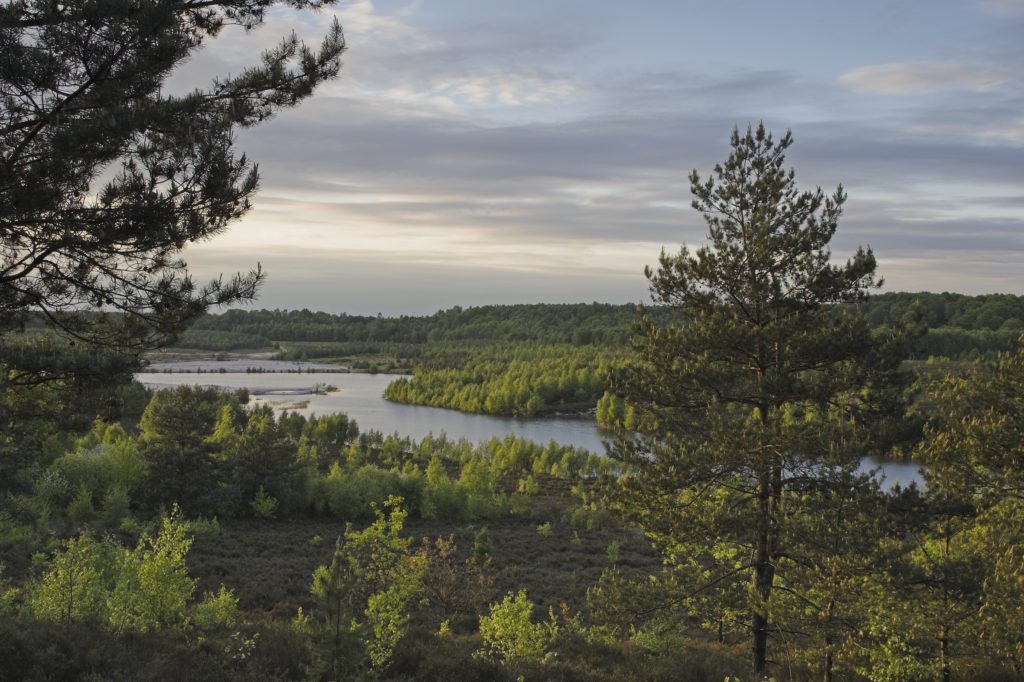
Kikbeek Valley – Hoge Kempen National Park
But what are “Biological Field Stations”?
Spread throughout the world, the Field Stations serve as living libraries or outdoor laboratories aiming to understand natural processes at every scale, from the molecular to the global, from milliseconds to eons. They depend upon the support and involvement of the community- formed by students, researchers, and the general public interested in the environment.
Field stations are places where we can read the book of life in the language in which it was written.
– James Kirchner, UC Berkeley
Biological Field Stations_brochure
They vary greatly in heir form, extension, and even purpose, but they all share the same commitment to advancing our understanding of the Earth by supporting research, teaching, and public education. The range goes from marine laboratories whose focus is offshore, to terrestrial reserves dedicated to protecting key ecosystems. They serve not only as a research center but also as a scientific education resource.
Field stations play a vital role in the local communities, both encouraging staff, and researchers in taking part in local and regional decisions to make sure the environment is taking into account. And providing facilities and useful scientific data to improve the local knowledge about the environment, supporting governmental and other stakeholders address environmental-related issues.
Don’t miss the date and discover the workshops, field trip and more of this conference in the official Website of the OBFS
Making an IMPACT: a workshop you can’t miss @ the EU Week of Regions & Cities 2019
Workshop “Making an Impact: Putting protected areas at the heart of EU policies for the sustainable development of regions and cities”
Protected Areas were established to protect and preserve biodiversity and the ecosystem services they provide us, however, that doesn’t make Protected Areas places where human activities are not allowed, in fact, during our whole history, those
human activities have created and shaped the landscapes and ecosystems we see, enjoy and that still today provide us with food, freshwater, and spaces to relax and reconnect with nature.
There are so many human activities that if well-managed can grant benefits for both ecosystems and society: such as creation of green-jobs. That is the aim of the project IMPACT #InterregEurope. To create innovative models for Protected Areas. Thank to the project, many examples of good practices on sustainable development have yet been recorded.
For the European Week of Regions and Cities, we will answer to the question…
What can protected areas do to promote sustainable development in both regions and cities?
During this workshop, we will share the best good practices of IMPACT #Interreg Europe, putting Protected Areas as engines of regional sustainable development. We will hear about innovative ways to involve local stakeholders in socioeconomic activities. We will also learn about a successful protocol to promote sustainable tourism in protected areas. Lastly, we will discover how a Periurban Protected Area can play a decisive role in several EU policies to promote sustainability in urban regions.
The workshop will be followed by a networking session during which the IMPACT partners will share their best good practices and we will further discuss this topic.
Speakers: Jean-Marc Dujardin, Teresa Pastor, Stefania Petrosillo, Javier Soto Vázquez
Partner/s: EUCC – Baltic office, EUROPARC Federation, Espaces Naturels Régionaux, National Institute for Research and Development in Tourism of Romania, Regione Molise
Don’t miss the date, Free registrations are open!
8th of October 2019 – Building SQUARE – Brussels Convention Centre, Room Hall 300
Workshop web here, registrations and further information about the European Week of Regions and Cities also available in the official Website.
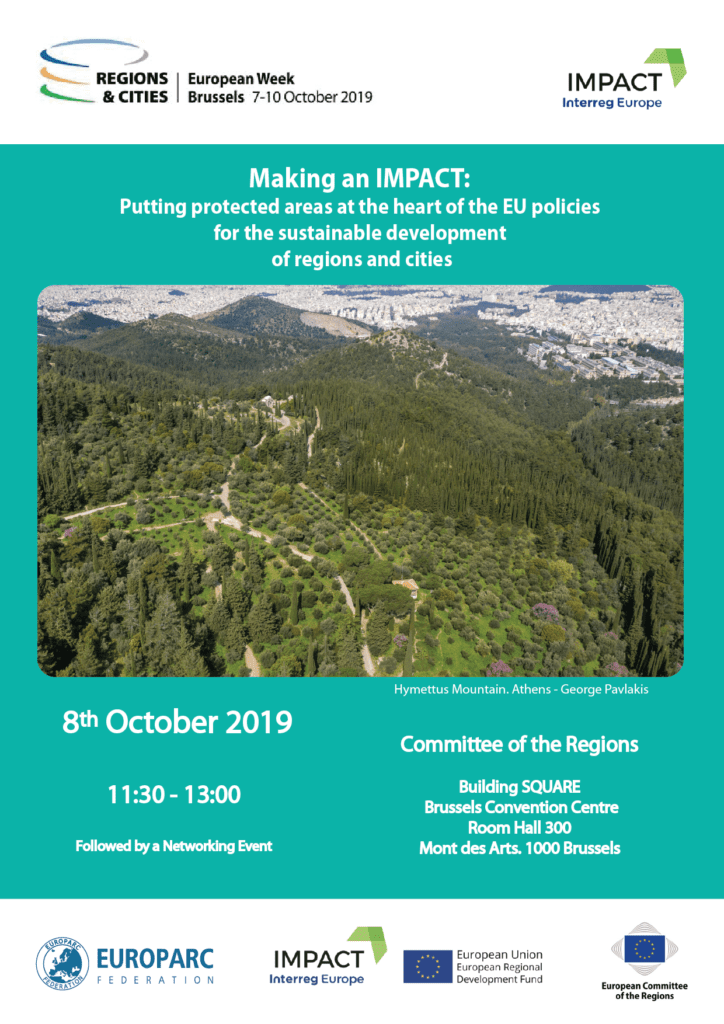
“Undisturbed”: UK runs campaign to “educate” wildlife photographers and drone operators
Wildlife photographer, photo from pixabay
The UK National Wildlife Crime Unit is running a social media campaign targetting wildlife photographers and drone operators… to leave wildlife “undisturbed”. This is the story of their campaign, published in the “Countryside Jobs Service”.
Leave wildlife #undisturbed
Due to the latest advances in technology and more affordable prices in equipment, photography and filming are fast becoming a popular activity in European Protected Areas. Furthermore, in some cases, the use of drones has proved to be a powerful tool for Protected Area professionals, able to provide different types of information in a cost-effective manner.
However, photographers without knowledge of wildlife behavior are approaching animals and popular places for them in search of new pictures – and if the approach is too close and invasive, it could lead to sudden behavior changes of the species, and cause harmful effects on biodiversity.
Some incidents so far reported include causing seal colonies to stampede into the sea, seabirds fleeing cliff ledge nests, dolphins changing behavior due to vessels and raptors lifting from nests due to human presence. In the case of drones, flying close to the animals could cause panic and unnecessary stress.
These incidents were not only seen in Protected Areas, where visitors are usually monitored and controlled, but especially in non-managed areas, where surveillance and enforcement are often absent.
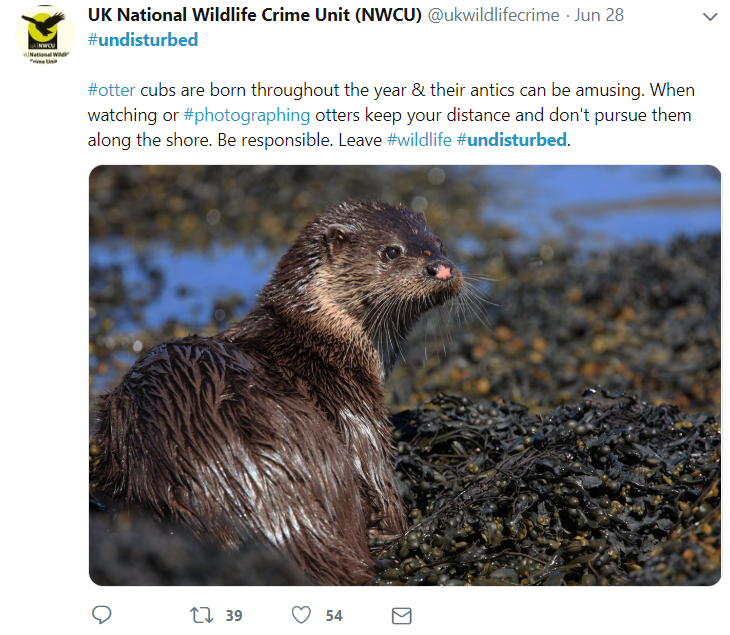
A crime prevention campaign
Under the name of Undisturbed, the UK National Wildlife Crime Unit (NWCU) launched in May 2019 a social media crime prevention campaign. It aims to sensitize wildlife photographers and drone operators about the risks when approaching wildlife to guarantee the welfare of the animals.
This measure complements the UK legislation. The Wildlife and Countryside Act 1981 and Conservation Regulations 1994 sanctions those who intentionally or recklessly disturb protected species with fines that can reach to £5,000 or even 6 months imprisonment. In fact, in the UK, management of wildlife is a devolved power, so the competent authority is allowed to apply licenses to cause disturbance for the purposes of photography. The licenses prevent the photographers from committing an infringement if the animal is disturbed.
Laurie Campbell has over 40 years of experience as a photographer and confirms the rise in the number of wildlife disturbance incidents cause by other photographers. She advises:
As far as possible, one should always research the species of bird or mammal in advance and to determine its protected status within law before attempting to photograph it. Recognising the signs of stress and being aware of any changes in the natural behavior of any animal is vital, both to judge how close you may approach safely, and when to back away. Regardless of whatever the protected status of the species may be, its welfare must always come before the desire to photograph it.
Lou Hubble, Chief inspector and head of the NWCU and Chief says:
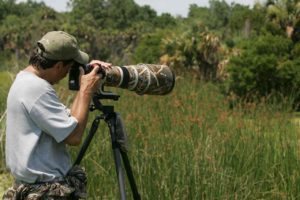
Photo by pixabay
“Wildlife is amazing! It is a real privilege to see animals and birds in their natural habitat. We have such a diverse range of species throughout the UK and it is only natural to want to get close to them. However, this initiative serves to remind people that disturbance could be a criminal offense. Please be responsible when photographing or filming wildlife and birds and allow others to enjoy the experience as you have.”
The campaign is supported by the Partnership for Action against Wildlife Crime in England & Wales, Scotland and Northern Ireland respectively and incidents of disturbance should be reported to the UK’s Police by dialing 101.
You can check the Undisturbed campaign in twitter following @ukwildlifecrime and follow the hashtag #undisturbed
“Sharing know-how”, a manual on international cooperation by EUROPARC Germany
EUROPARC Germany launched a new manual about international cooperation: “Sharing Know-how” – the Manual is not only the output of a 3-years project funded by the German Government – it is an insight on several good practices that are being implemented by European Protected Areas.
The importance of “Sharing Know-how”
Since 1973, EUROPARC believes that European nature is better protected through international cooperation. In fact, nature knows no borders! (which is especially relevant if we think about the geopolitical changes in Europe over the last century). This mindset of international cooperation is a common belief among all EUROPARC Sections, which despite working on topics more relevant to a specific region or country, often create opportunities for their members to exchange experience and learn from abroad.
That is exactly what EUROPARC Germany has done with the project ANNIKA (Actors from National Natural Landscapes in the International Exchange of Competence), that ran from 2015 to 2018 and allowed professionals of Germany’s natural landscapes to learn & exchange best practice through study tours in several European countries.
Looking at the broader picture softens the boundaries in thinking, finds solutions, and clarifies alternatives, possibilities, new approaches and self-perception,
said a participant in the final workshop of the ANNIKA project.
The brochure covers useful and practical cases of Protected Areas from Austria, United Kingdom, Germany, Finland, and the Netherlands on topics such as:
- Regional development and tourism
- Accessibility and inclusion
- Financing Strategies
- Education for sustainable development
- Volunteer management
The publication “Sharing Know-how” is a compilation of practical examples outlined by several authors who took part in visits to protected areas in 2016 and 2017. The manual is available in English and German and serves to continue the focus on international exchange of expertise, experiences and working methods between protected areas professionals.
It is also intended to promote the outcomes of the project. According to EUROPARC Germany, “broadening the horizons through study abroad boosts an intensive method to increase knowledge and competence, provides a helpful distance to self-evidentness and habits, increases motivation through the experience of an international “circle of colleagues”, and allows the establishment of contacts for future cooperation.”
Download the full Manual:
You can also download the brochure only in English or German separately or even ask for a printed version to EUROPARC Deutschland:
English Version – Sharing Know-How
German Version – Wissen Teilen
The ANNIKA project was supported by the Federal Agency for Nature Conservation (BfN) with funds from the Federal Ministry for the Environment, Nature Conservation and Nuclear Safety (BMU).
